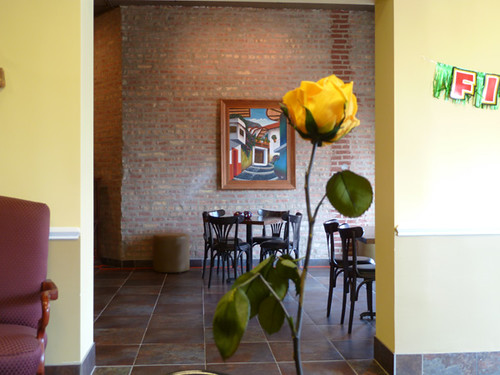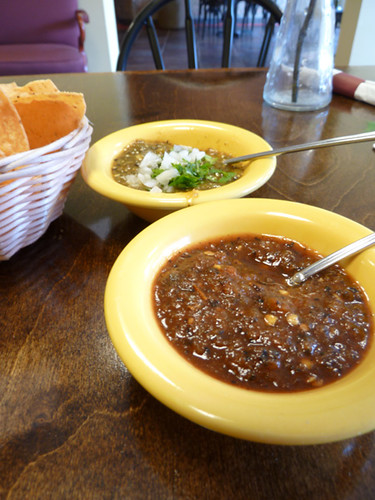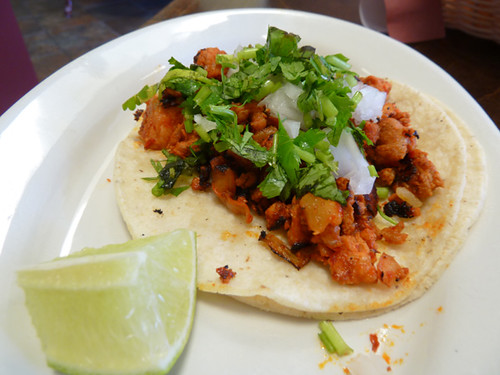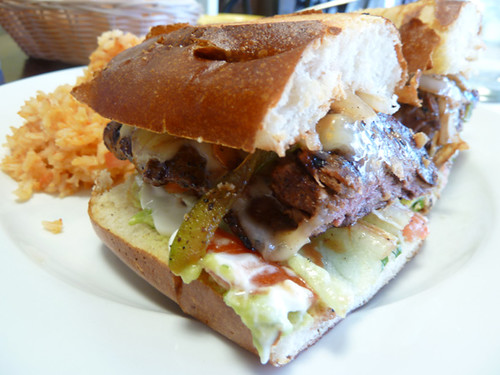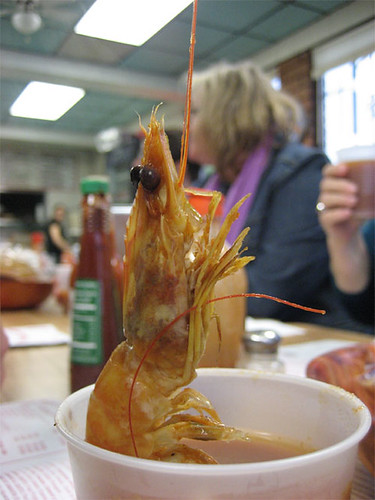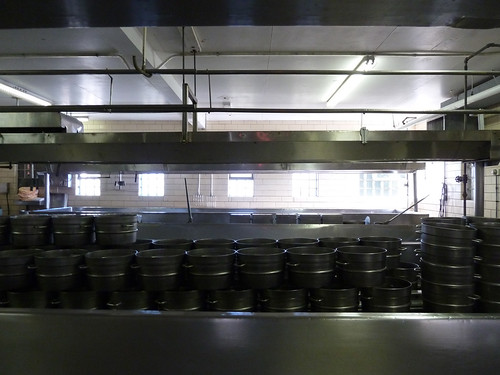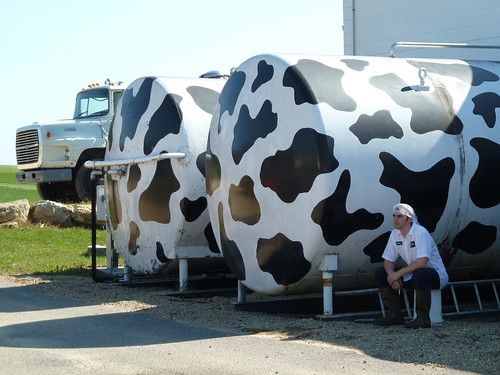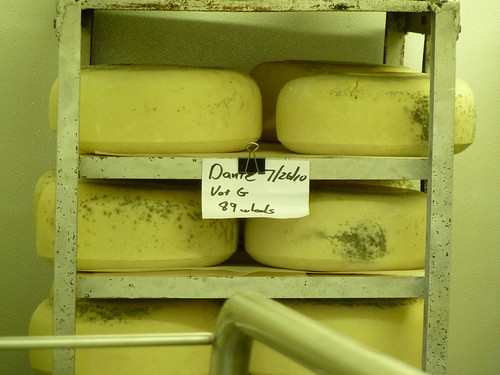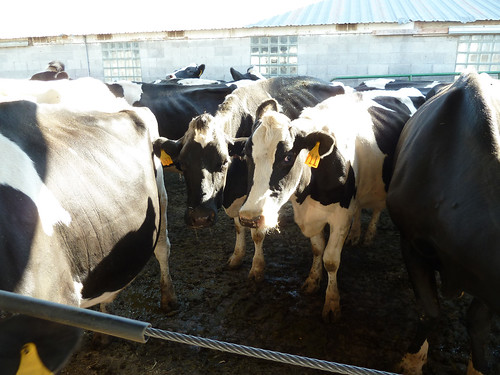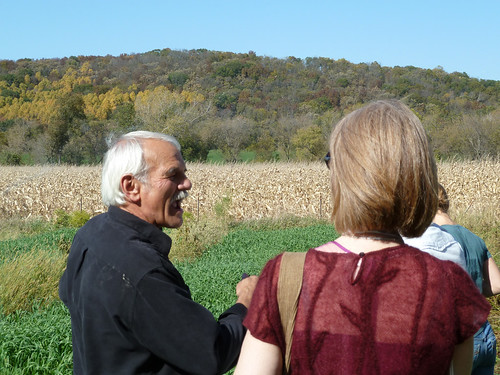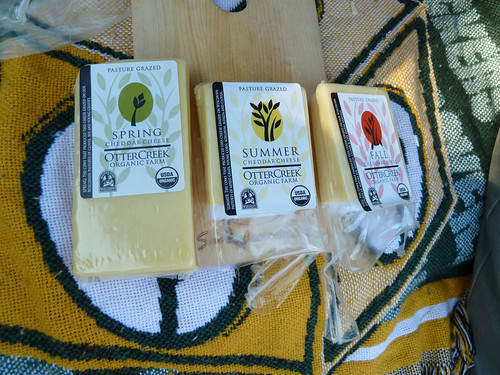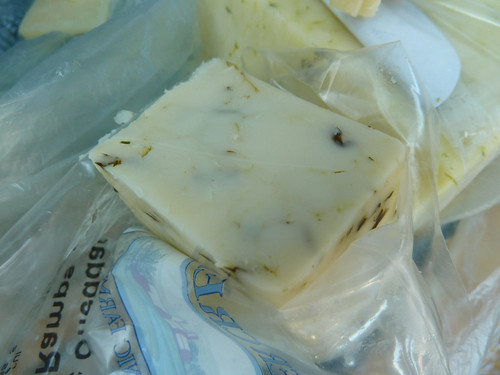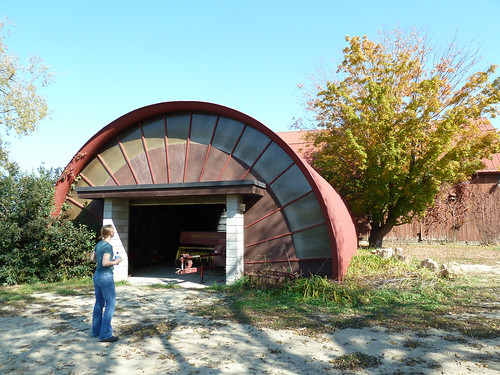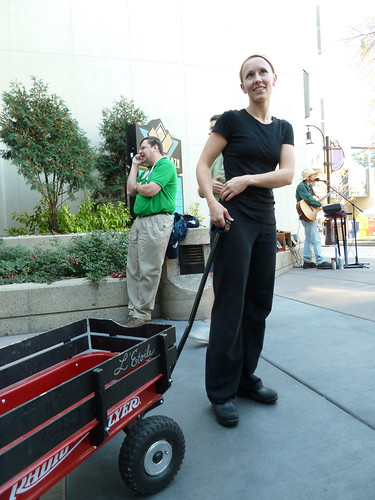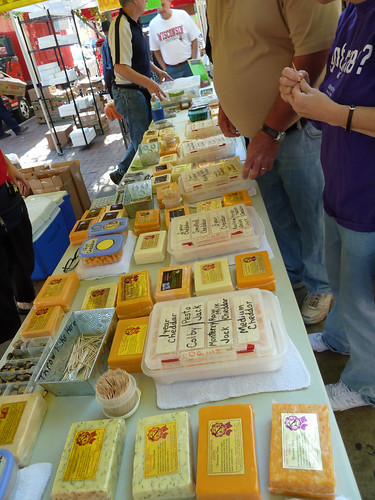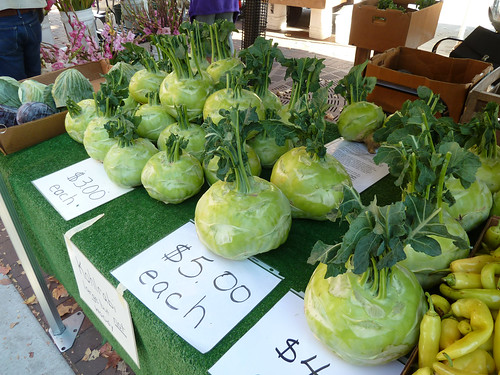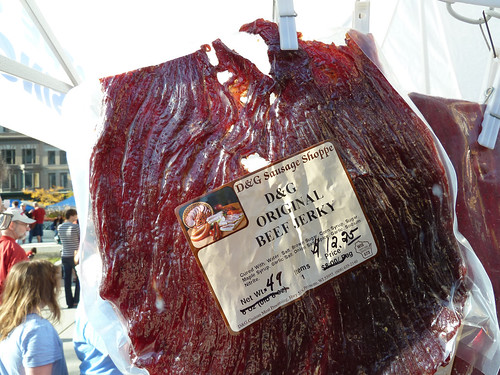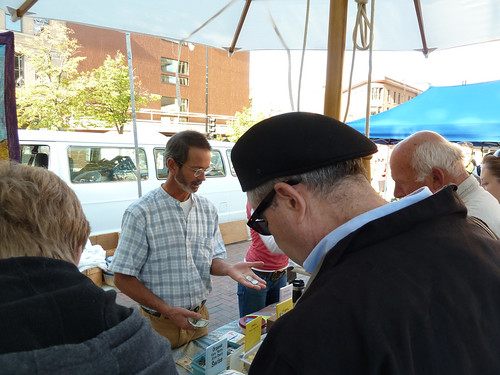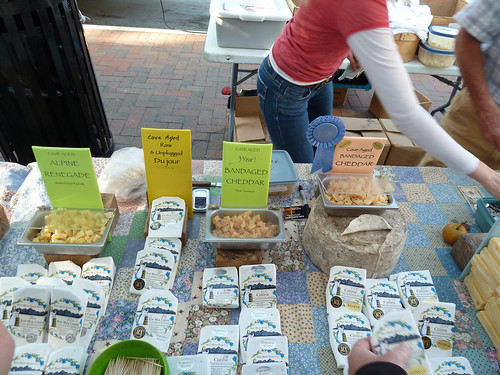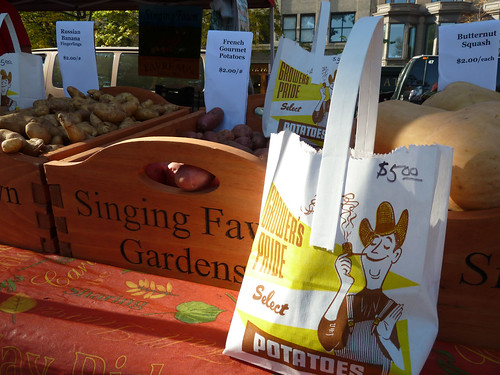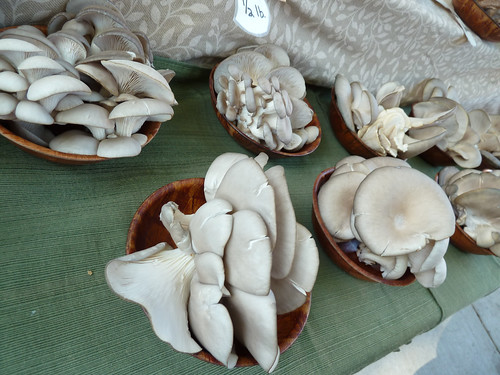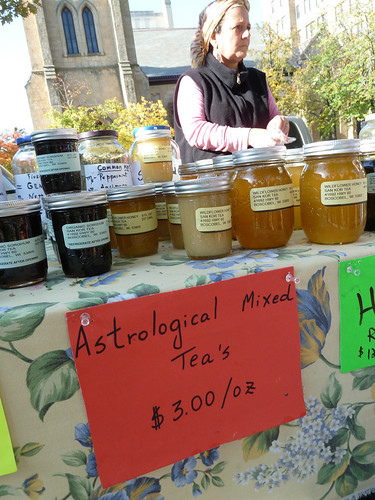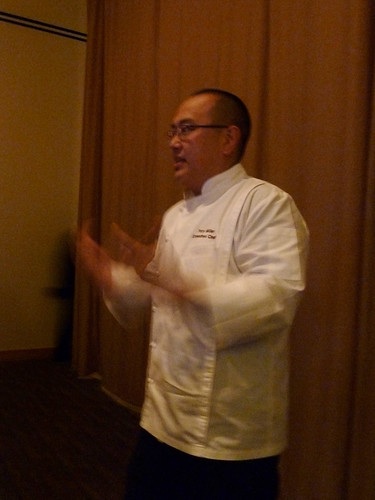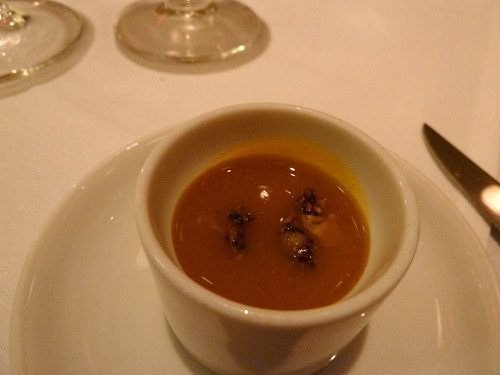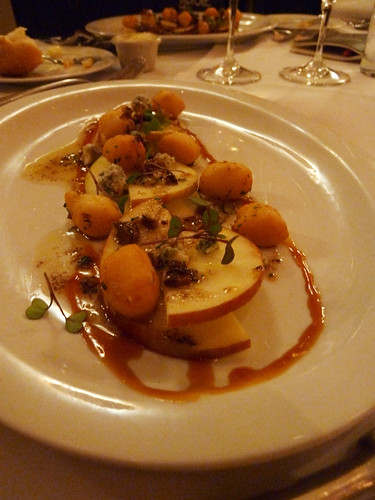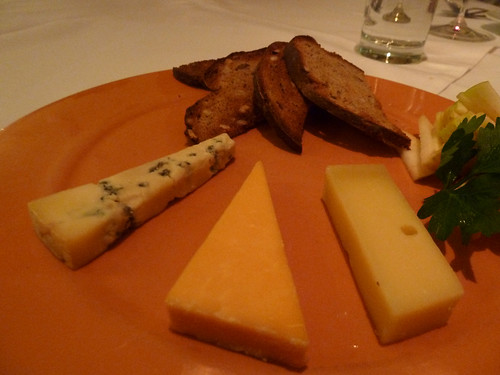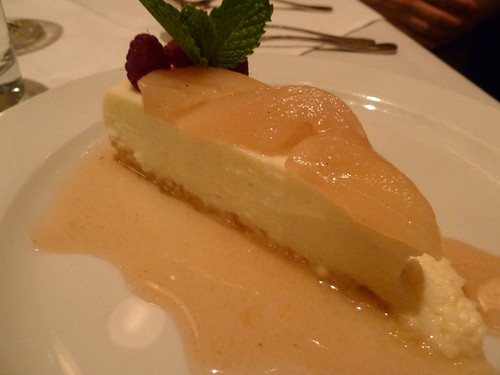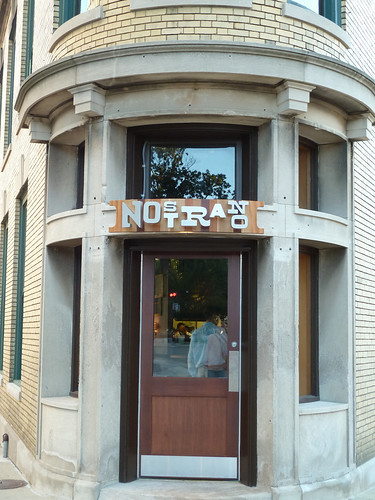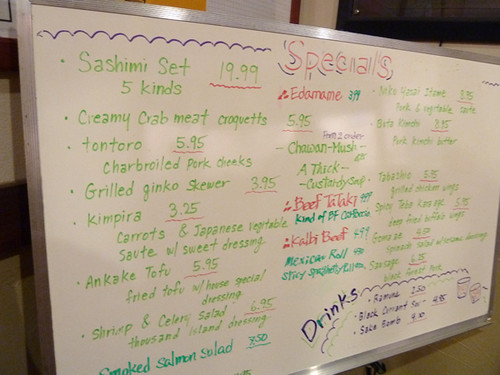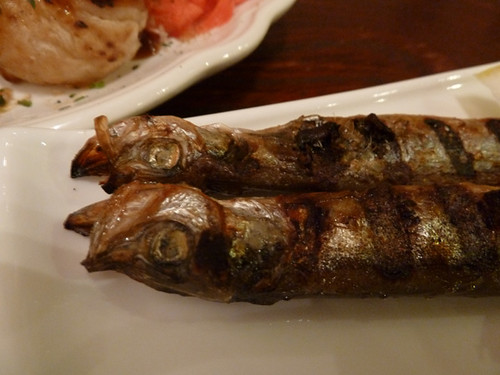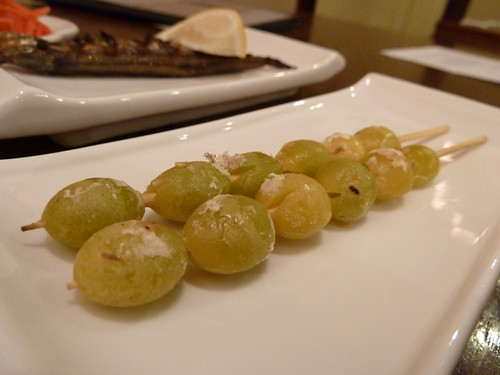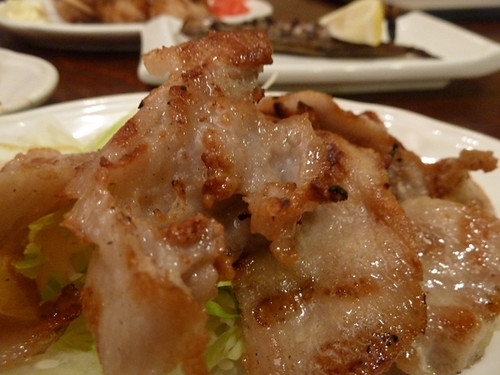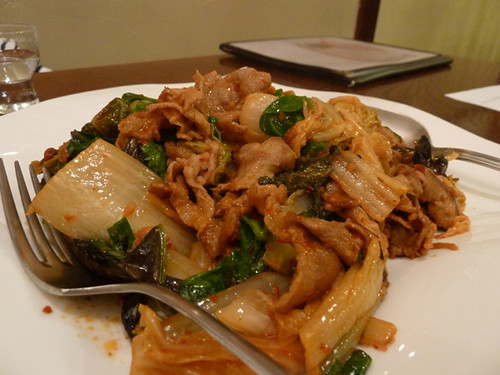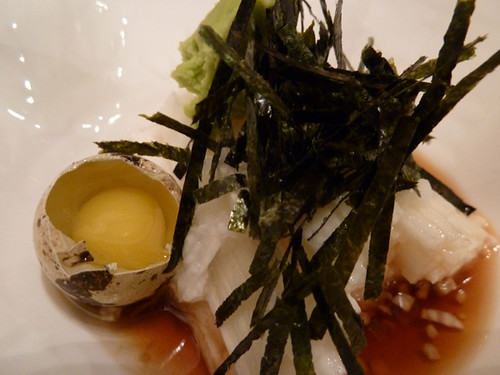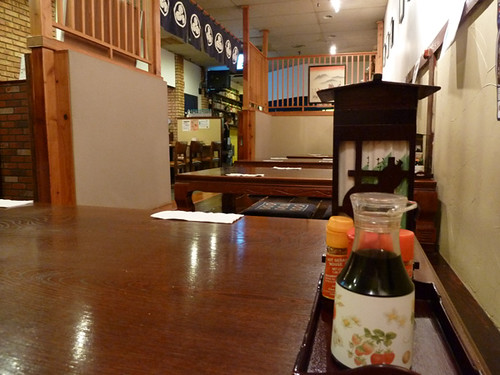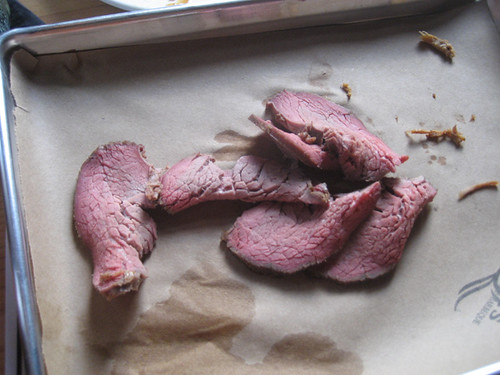
The cliche, of course, is that urbanites are full of radical ideas and unconventional thinking, while people in rural areas are as complacent as cows. In reality the stereotype more likely runs in the other direction: the societal pressure of city life largely imposes homogenized behavior on us urbanites, but give a man a little land and the freedom to play around on it, and in no time he’ll have built an entirely new way of living powered by cow dung and leftover whey. (You think I exaggerate. Just wait.) I’m always amazed by the practical fecundity of rural entrepreneurs, who sniff out new ideas from farms half a world away and promptly put them to work on their land, over and over. Admittedly, the rural folk I tend to meet are ones who tend to stand out for something interesting they’re up to while raising food, and are surely outliers to some extent, but still, you could drive around for three days meeting cheesemakers and milk producers, and learn something completely new and different at every stop.
Which is exactly what I did last week. David Hammond and I were guests for a 3-1/2 day cheese junket with the Wisconsin Milk Marketing Board, via its PR firm Stephan & Brady, along with about 15 other journalists and bloggers plus a couple of chefs or wine professionals. (Since milk is largely a local product across the country, the growth market for Wisconsin dairy farmers is to have more and more cheese made and exported from the state. So basically the cheesemakers get publicity courtesy of the dairy farmers who want there to be more of them.)
We visited seven cheesemakers within 90 minutes or so of Madison, and though the facilities and processes were largely the same, the approaches were so different and interesting in every case that it never got old, or at least, after starting with the same basic equipment, it soon went off in its own direction reflecting the philosophy of the cheesemaker involved. A good example of how these cheesemakers reflect different philosophies peaceably: at one cheesemaking plant, Cedar Grove, we were treated to a pretty firm attack on the whole raw milk craze by certified Master Cheesemaker Bob Wills, who clearly thinks the sanitation issues (and financial pain of throwing out whole batches that test as contaminated) far outweigh any positive benefits.
At the very next stop, Otter Creek Farm, we… tried raw milk ourselves, fresh from the tank and the cows half an hour before. (No one either died or felt suddenly reinvigorated.) And we were treated to an equally vigorous opposing presentation of the virtues of this most natural of products.
Now, guess who actually makes Otter Creek’s cheeses for them? Bob Wills, at Cedar Grove.
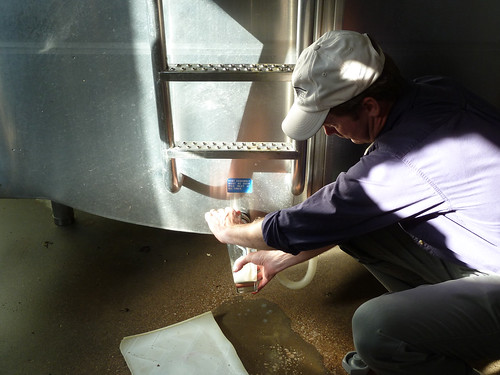
Here and in a followup post will be the seven stops we visited; you wouldn’t be able to just walk in and get the same tour, but nearly all of them have a store which you could visit, which might give you at least a little opportunity to see how it’s made, just a few feet away in many cases. Or you could taste their cheeses via shops such as Pastorale and Provenance in Chicago, or in Madison at the Dane County Farmer’s Market and the cheese shop Fromagination, located on the capitol square.
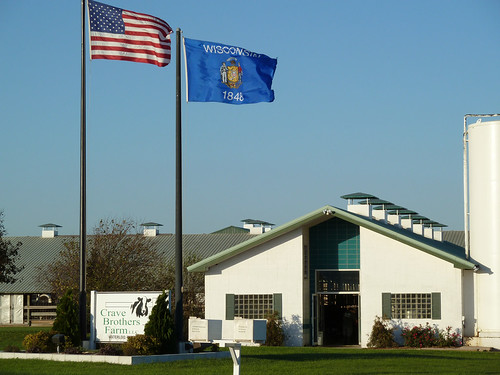
Crave Brothers, Waterloo
Crave Brothers— not a cute foodie name, they really are brothers whose last name is Crave— has a thousand dairy cows at a farm big and industrial enough that we drove our bus through the barn, as if it were Cow Country Safari.

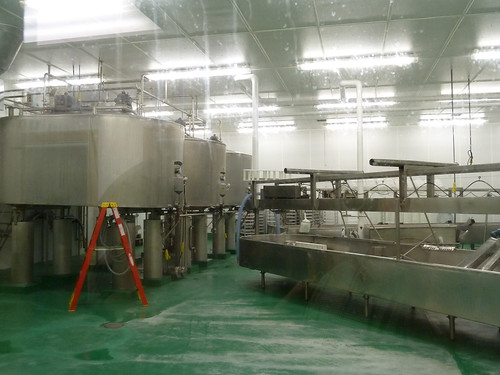
This is a big operation with little of the romantic image of the Old World cheesemaker to it; the endless rows of high-production Holsteins who are milked three times a day (other farms consider two more humane, though the cows may not really mind since they will try, on occasion, to get back in line for another go-round) make that clear enough. And George Crave said that they got into making the cheese they do— mostly fresh mozzarella, including private label for, it was hinted, a certain yuppie grocery chain— purely as a business decision, going to distributors and asking them, what did they want a new supplier for, that would provide the margins the Craves wanted? That said, there’s nothing wrong with well-managed bigness per se, since for one thing it afforded them an opportunity to partner with an energy company on a system that processes the manure the farm produces and burns the methane, producing enough power to run their entire farm and several hundred homes besides. This not only uses that much less of some other power source, but gets rid of the giant-poop-lagoon problem common to large animal operations.
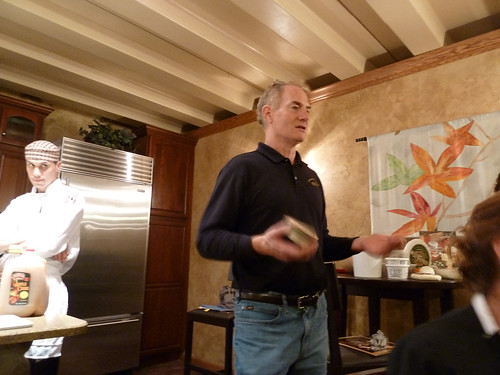
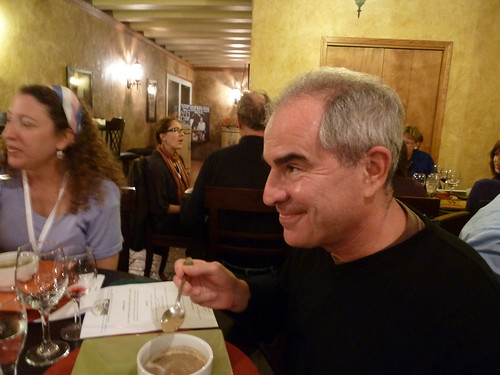
Business is good, clearly, to judge by the winery-like tasting room in which we had dinner. But in time they felt the urge to make something more artisanal like some of their neighbors, and they began working on an authentic Münster-style cheese. What they got, however, was stinkier than they thought the market could bear, and so they went back to work creating what struck me as kind of a deodorized American take on stinky cheese— Les Freres, a soft cheese with a kind of nuttiness and something resembling funk, yet without the foot smell of a truly stinky cheese. That makes it sound like it’s dumbed down, but the combination of this nutty, gently funky cheese baked with wild mushrooms was actually pretty wonderful. Likewise, their mascarpone, put into various desserts, was mild on its own but elevated the sweet flavors with its cheesey tanginess, and made for excellent sorbet and a lemon cream filling, among other things.

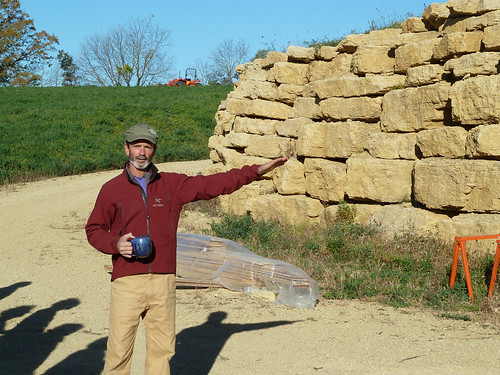
Bleu Mont Cheese, Blue Mounds
We got plenty of romance the next morning, starting at Bleu Mont, run by Willi Lehner, famous for his cheese cave— the only “cave” of its kind in Wisconsin which is actually underground. Carved into a hill, it looks like a hobbit house, befitting the somewhat elfin Lehner, a thoughtfully serious man of Swiss parentage whose property is dotted with solar panels, a new wind turbine (the previous one fell in a storm) and other signs of determined self-reliance.
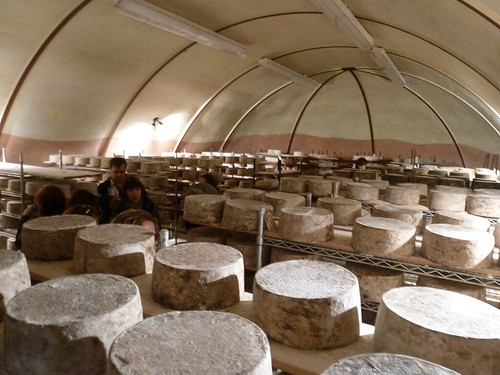
It was in Lehner’s cave that I got my first blast of what I’d come to know as the smell of artisanal cheese: a sort of sweet, Band-Aid crossed with wet plaster scent in the air. Lehner had experimental batches of various things around the edges of his cave, but his main cheeses were two aged raw milk cheeses, one called Alpine Renegade and one a bandaged cheddar, which he sells at various ages at the Dane County Farmer’s Market. I especially loved the latter, hard and tart and concentrated, studded with crystals and with a distinct chalky-cave taste around the outer edge, and bought a chunk from Lehner at the farmer’s market a few days later, which I will nibble at carefully for weeks to come.

Uplands Cheese, Dodgeville
Lehner’s only facility is his cave; he makes his cheeses at other plants such as Cedar Grove, and his milk comes from Uplands, another dairy whose artisanal dedication is obvious (for one thing, from the ribbons and medals on the wall; their signature cheese, Pleasant Ridge Reserve, has won best of show three times at the American Cheese Society, which is twice more than anyone else ever). As a farm they feed their cattle by rotational grazing, which means among other things, that when growing season is over, so is milk production. So we saw them close to the end of their cheesemaking season— not a concept that would have any meaning at a big industrial facility, but plainly essential to their vision of how to make the best cheese.
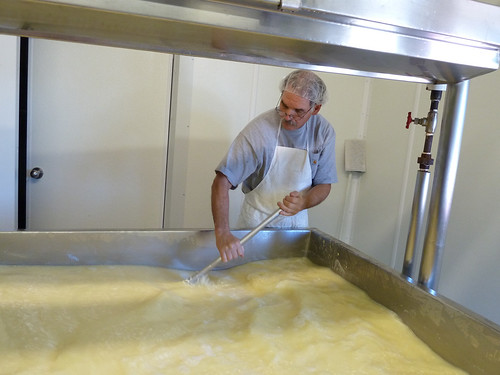
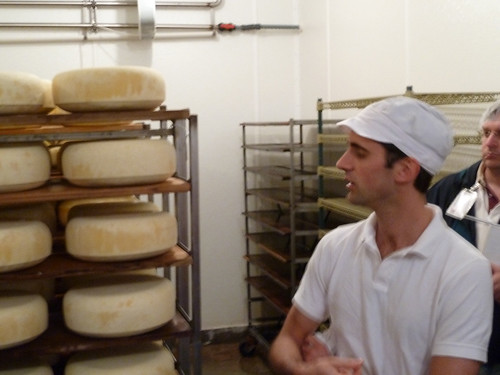
Andy Hatch is Uplands’ current cheesemaker and something of a star (he’s on the cover of the Wisconsin Cheese Originals cheesemaker pinup calendar). (Easy there cheese groupies, his wife was packaging cheese for shipping as we toured the plant.) Because the milk that goes into the cheese changes with the seasons, each week’s batch is carefully watched and tasted individually (via core samples) to decide when it’s ready to be released:
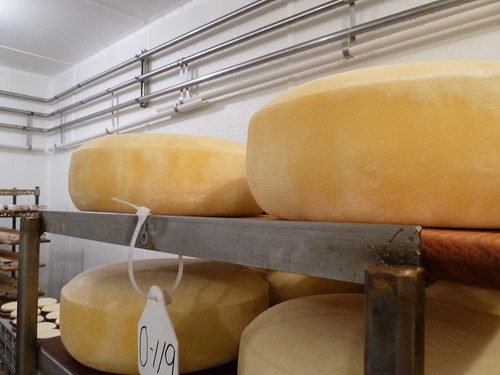
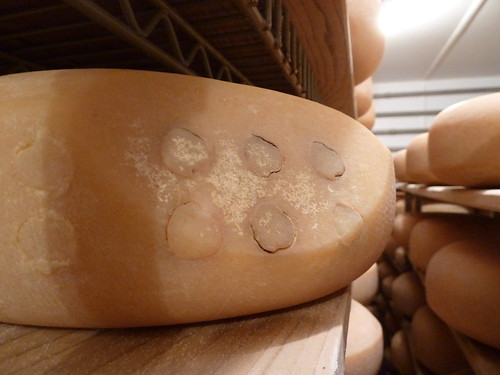
I liked Pleasant Ridge Reserve, but after the Beethoven mouth-blast of Lehner’s bandaged cheddar, its subtlety and undeniable balance seemed admirable but less of a knockout to me. Maybe that’s what the judges in a competition like, though— subtlety.
I was more intrigued, in fact we pretty much all were, by a camembert-looking cheese to be called Rush Creek Reserve which should be available in another month or so. We hinted broadly at our willingness to be early tasters of it, but all we got was stickers— the labels for the packaging, coming shortly.

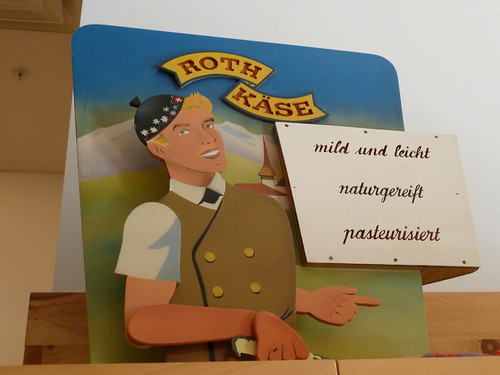
Emmi-Roth-Käse, Monroe
After two examples of artisanal cheesemaking at its most artisanallish, Roth-Käse, a venerable Wisconsin cheese company (founded 1863) recently acquired by the Swiss conglomerate Emmi, was a blast of industrial reality. My first impression— possibly a bit crabby as we were behind schedule for lunch— was that they seemed much more interested in sanitation than, you know, cheese. (To be fair, I think our guide was stalling while waiting for the first half of our group to move on.) But certainly it’s a big, shiny steel cheese plant, proud of its technology (though we never did see the robots who move cheese wheels around in the two-story cave) and dedicated to producing a consistent industrial product.
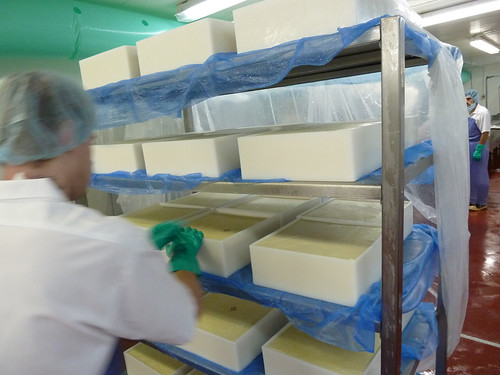
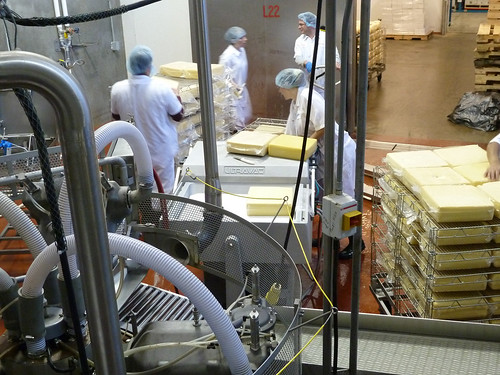
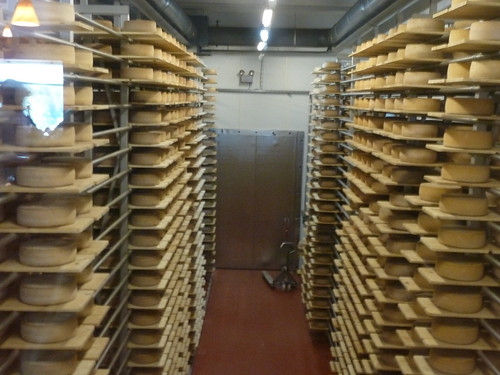
Even so, there was evidence of a human touch here and there. After passing through the various cheesemaking areas, we descended into the hall with the caves, which boomed with echoes of industrial noise and released blasts of steam like the Seventh Circle of Cheese Hell. And there, in the depths, the rinds were washed by hand by an employee who hoisted two of the huge wheels at a time, dropped them on a table with a resounding boom, wiped them with the culture and then dropped them back onto the shelf— all in a flash, and with a kind of brawny Teutonic relish that seemed to have walked out of an Upton Sinclair novel.


And then there was lunch. Our main course was fondue (ah, spared from going to Geja’s for another decade), but before that, we had a tasting of some of Roth-Käse’s cheeses along with a variety of accompaniments— a plate of different foodstuffs, and a series of glasses containing everything from New Glarus beer to a small production kirsch one of the chefs had brought back from a recent Swiss trip. It was fun to try, though I have to admit, I didn’t come to any deeper conclusion about cheese pairings than that just about anything sweet goes well with just about any cheese.

Ironically, the gruyere that is the plant’s main reason for being was not particularly admired, by me or anyone else. But I very much liked Valfino, a soft cheese (at top) which took a first at the American Cheese Society last year, and the horseradish havarti at bottom. Best of all were the two blues— a creamy Buttermilk Blue, top, and Moody Blue, which is very lightly smoked. Both were terrific (and I was happy to note that both are available at Whole Foods).
This gracious lunch concluded with our chef demonstrating another of his skills: yodeling.
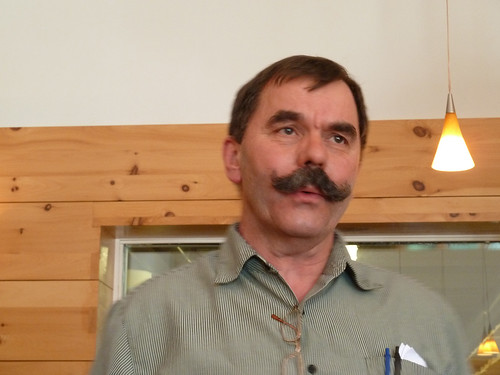
Continued here.
* * *
Here are some links to things others on the trip have written about it:
Hammond on Lehner
Philip Potempa of the Northwest Indiana Times filed daily from the bus while the rest of us goofed around; here he is on Friday and Saturday.
Rustic Kitchen (who promises more to come)
Madame Fromage: Cheese Coma and Notes From a Cheese Media Tour
It’s Not You, It’s Brie: Day One
Sippity Sup: Wisconsin Milk
There will be more of these in the next installment, too, I’m sure…




 Posted in
Posted in 
